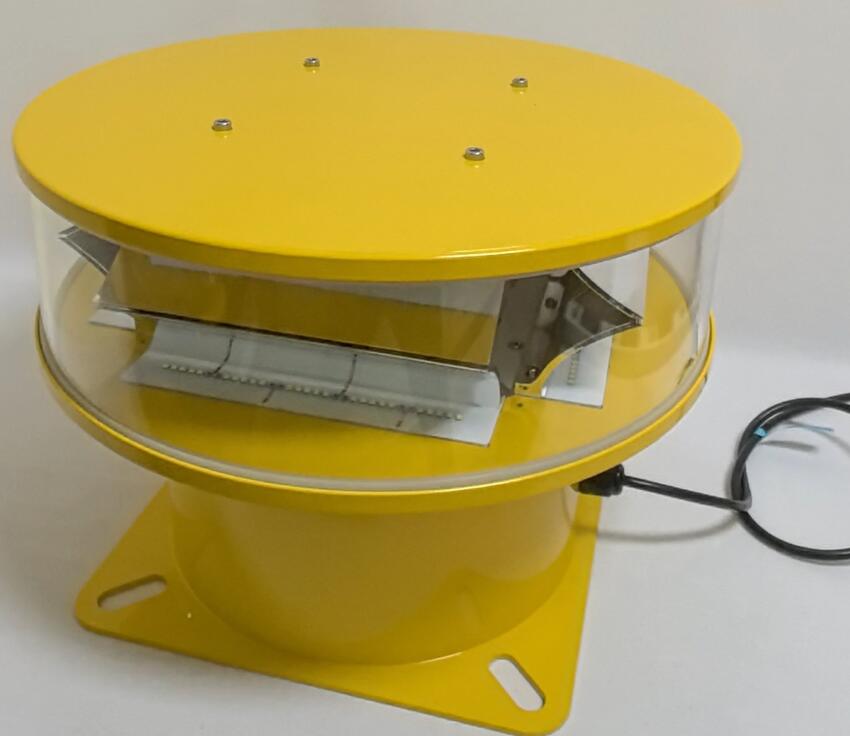Posted: 2025-03-21
FAA approved obstruction lights are a cornerstone of aviation safety in the United States, ensuring that tall structures such as towers, buildings, and wind turbines are visible to pilots, particularly during nighttime or low-visibility conditions. These specialized lighting systems meet stringent regulatory standards set by the Federal Aviation Administration (FAA), providing reliable and consistent markers for obstacles in the national airspace. As air traffic continues to grow and urban landscapes become more complex, FAA approved obstruction lights play a vital role in preventing collisions and safeguarding the skies. This article explores the importance, functionality, and advancements of these lights, highlighting their critical contribution to modern aviation.
The Importance of FAA Approved Obstruction Lights
The primary purpose of FAA approved obstruction lights is to enhance the visibility of tall structures that could pose a hazard to aircraft. These lights are installed on structures exceeding certain height thresholds, as defined by FAA regulations, to alert pilots to potential obstacles during critical phases of flight such as takeoff, landing, or low-altitude navigation. By providing clear visual cues, FAA approved obstruction lights help pilots maintain situational awareness and avoid collisions, even in adverse weather conditions or at night.
FAA approved obstruction lights are particularly crucial in areas with high air traffic density, such as near airports or in urban environments with numerous tall buildings. They are also essential for structures located in remote or rural areas, where natural terrain might not provide sufficient visual cues for pilots. Without these lights, tall structures could pose a significant risk, particularly during adverse weather conditions or nighttime operations.

Types of FAA Approved Obstruction Lights
FAA approved obstruction lights come in various types, each designed for specific applications and visibility requirements. The most common types include:
Low-Intensity Obstruction Lights: These lights are typically red and are used on structures less than 200 feet tall. They provide steady illumination and are suitable for areas with low air traffic density.
Medium-Intensity Obstruction Lights: These lights are used on structures between 200 and 500 feet tall. They can be either red or white and may flash at regular intervals. Medium-intensity lights are suitable for areas with moderate air traffic density.
High-Intensity Obstruction Lights: These lights are used on structures taller than 500 feet, such as communication towers and skyscrapers. They emit bright, white flashes that are highly visible during the day and at twilight. High-intensity lights are essential for ensuring visibility in areas with high air traffic density.
| FAA approved obstruction lights |
Dual Lighting Systems: Some structures use a combination of red and white lights to ensure visibility in all conditions. For example, red lights might be used at night, while white strobe lights are activated during the day.
Regulatory Standards for FAA Approved Obstruction Lights
The installation and operation of FAA approved obstruction lights are governed by strict regulatory standards to ensure their effectiveness and reliability. The FAA provides detailed guidelines in its Advisory Circulars (ACs), which specify the type, intensity, and placement of lights based on the structure's height, location, and purpose.
For example, structures taller than 500 feet must be equipped with high-intensity white strobe lights, while those between 200 and 500 feet may use medium-intensity lights. The lights must flash at a specific rate (typically 40 to 60 flashes per minute) and meet minimum brightness requirements to ensure visibility from a distance. Compliance with these standards is mandatory, and failure to adhere to them can result in penalties or restrictions on airspace usage.
| FAA approved obstruction light |
Technological Advancements in FAA Approved Obstruction Lights
Over the years, technological advancements have significantly improved the performance and efficiency of FAA approved obstruction lights. Some of the most notable innovations include:
LED Technology: Traditional incandescent bulbs have largely been replaced by LED lights, which offer higher brightness, lower energy consumption, and longer lifespans. LEDs are also more durable and require less maintenance, making them ideal for aviation applications.
Solar-Powered Systems: Solar-powered FAA approved obstruction lights are gaining popularity, particularly in remote or off-grid locations. These lights use photovoltaic panels to capture solar energy, which is stored in batteries and used to power the lights at night or during low-visibility conditions.
Smart Lighting Systems: Modern FAA approved obstruction lights are equipped with sensors and control systems that optimize their performance based on environmental conditions. For example, lights may automatically adjust their intensity during the day or night to conserve energy and reduce light pollution.
Remote Monitoring: Advanced systems feature remote monitoring capabilities, allowing operators to track the status and performance of the lights in real-time. This reduces the need for manual inspections and enables proactive maintenance.
Challenges and Future Directions
Despite their effectiveness, FAA approved obstruction lights face several challenges. One major issue is light pollution, which can be a concern for communities located near tall structures. The bright, flashing lights can be intrusive, especially at night, leading to complaints from residents. To address this, manufacturers are developing lights with adjustable intensity or directional beams that minimize light pollution.
Another challenge is the initial cost of installation, which can be higher than traditional lighting systems. However, the long-term savings in energy and maintenance costs often outweigh the upfront investment.
Looking ahead, the future of FAA approved obstruction lights will likely involve greater integration with emerging technologies such as artificial intelligence (AI), advanced satellite networks, and autonomous flight systems. These advancements will enable faster data processing, more accurate hazard detection, and improved decision-making capabilities.
FAA approved obstruction lights are an essential component of aviation safety, providing critical visual cues that help pilots navigate safely around tall structures. Through strict regulatory standards, technological advancements, and ongoing innovation, these lights continue to evolve, offering greater efficiency and reduced environmental impact. As the aviation industry grows, the importance of FAA approved obstruction lights will remain paramount, safeguarding the skies for generations to come. In a world where air travel is more accessible than ever, these lights are a beacon of safety and reliability.